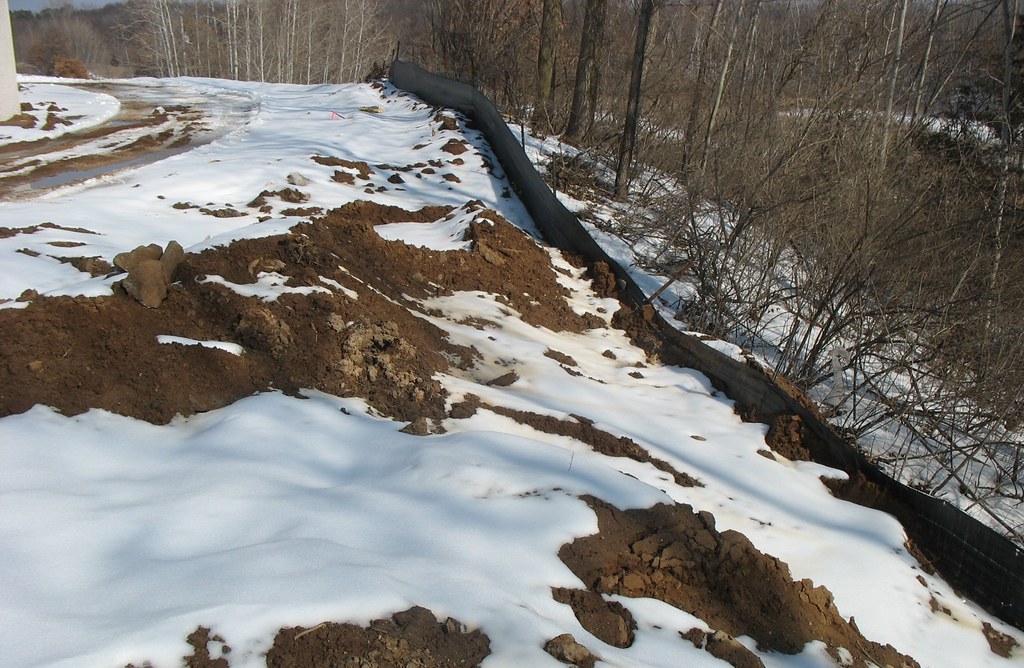As we welcome in November, construction projects ramp up to begin or complete projects before the dreaded F word: Freeze. Freezing temperatures introduce a multitude of issues, from equipment failure to cold working temperatures. Not only is it safer and more cost-efficient to close a project before winter but it also allows for further planning and reevaluation. While some projects may not allow for a complete close until spring, it is still vital to winterize a project.
We prepare for winter on our projects just as we prepare for winter in our vehicles. We pack an emergency bag complete with extra clothes or battery jump kits, windshield scrapers, you name it. We proactively prepare for that “just in case” moment as a single moment could cost more in the long term. It is the same for our projects – open slopes that will not be touched for more than the allowed time in the permit or closed up until spring need temporary stabilization for that “just in case”. In these circumstances, we know the “inevitable”: slopes will thaw and possibly cause run-off from the site. The protection of them is critical to the success of the projects. Some examples that can be done for temporary protection for winterization include mulching with crimping, temporary seeding, or erosion control blankets. Sediment control devices such as wattles and silt fences will deter runoff from sites as well.
Other aspects of winterization can go beyond the protection of slopes. If you know you will not be going on-site, protecting the bottom line includes removing chemicals, fuels, and fuel storage from the project site. To further assist in winterization, securing the site with extra protection such as more fencing and padlocks may prohibit unauthorized visitors.
Since temperatures fluctuate during the winter months, causing snowmelt, it is required in construction stormwater permits to conduct inspections within 24 hours of the snowmelt and periodically to confirm the site remains in compliance. During these inspections, checking for ice dams in drainage areas allows for function even when the site is closed for the season. Other areas to visit during these inspections would be silt fences to confirm no snow has been piled up against it, on top of it, or within 25’ of it upgradient. It’s also important to check that stabilized areas are functioning, that a rock placed for sediment control is not logged with sediment, construction entrances are functioning as necessary, and that other areas such as staging are secure and in good condition.
At the end of the day, whether you need to continue work on the site through the blistering cold, or if you can close up shop until spring, securing your site is the safest thing to do: for your people, for the project site, and for the bottom line. It is crucial to proactively prepare for not only the “just in case” but for that “inevitable” moment.
Click here for more tips on preparing your site and managing stormwater this season. If you have any questions, please fill out the contact us form to the right.
